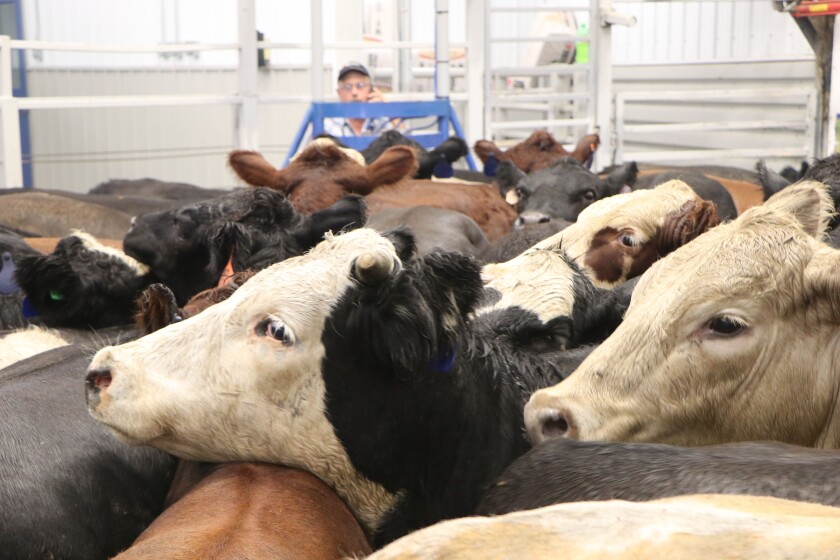Guarding Success: Bagley Risk Management Solutions
Guarding Success: Bagley Risk Management Solutions
Blog Article
Understanding Animals Risk Security (LRP) Insurance Coverage: A Comprehensive Guide
Navigating the realm of livestock danger security (LRP) insurance policy can be an intricate undertaking for many in the agricultural market. This kind of insurance policy provides a safeguard versus market fluctuations and unforeseen circumstances that can affect animals producers. By understanding the complexities of LRP insurance coverage, producers can make educated decisions that might safeguard their procedures from financial threats. From just how LRP insurance coverage operates to the different protection alternatives readily available, there is much to reveal in this thorough overview that might potentially form the method animals manufacturers approach threat administration in their companies.

Exactly How LRP Insurance Policy Functions
Sometimes, comprehending the mechanics of Animals Danger Protection (LRP) insurance coverage can be complex, but breaking down just how it works can offer clearness for breeders and farmers. LRP insurance policy is a threat management device made to safeguard animals manufacturers versus unanticipated price decreases. It's crucial to keep in mind that LRP insurance coverage is not an income assurance; rather, it focuses only on cost danger protection.
Eligibility and Insurance Coverage Options

When it comes to coverage options, LRP insurance supplies manufacturers the adaptability to pick the insurance coverage level, coverage duration, and endorsements that finest suit their risk administration demands. By recognizing the eligibility criteria and coverage alternatives readily available, animals manufacturers can make educated decisions to manage threat efficiently.
Pros and Cons of LRP Insurance
When reviewing Animals Risk Protection (LRP) insurance policy, it is important for animals manufacturers to evaluate the advantages and drawbacks fundamental in this risk management tool.

One of the key advantages of LRP insurance is its ability to supply protection against a decrease in animals rates. This can help secure manufacturers from financial losses resulting from market changes. In addition, LRP insurance coverage uses a level of adaptability, allowing producers to personalize insurance coverage degrees and plan durations to suit their particular requirements. By securing an ensured price for their animals, producers can better handle threat and prepare for the future.
One limitation of LRP insurance is that it does not shield against all kinds of threats, such as illness outbreaks or all-natural catastrophes. It is crucial for manufacturers to carefully assess their specific threat exposure and monetary circumstance to figure out if LRP insurance is the ideal danger management device for their operation.
Understanding LRP Insurance Coverage Premiums

Tips for Maximizing LRP Perks
Maximizing the benefits of Animals Danger Protection (LRP) insurance coverage calls for strategic planning and aggressive threat management - Bagley Risk Management. To take advantage of your LRP protection, think about the adhering to ideas:
Consistently Assess Market Conditions: Keep informed about market patterns and cost changes in the livestock market. By checking these aspects, you can make informed decisions regarding when to acquire LRP coverage to protect against prospective losses.
Establish Realistic Insurance Coverage Degrees: When picking protection levels, consider your manufacturing expenses, market worth of livestock, and potential risks - Bagley Risk Management. Establishing sensible insurance coverage degrees makes certain that you are adequately protected without overpaying for unneeded insurance
Diversify Your Coverage: Rather than counting only on LRP insurance, take into consideration expanding your danger monitoring approaches. Incorporating LRP with other risk monitoring devices such as futures contracts or alternatives can offer extensive coverage versus market uncertainties.
Review and Adjust Insurance Coverage Routinely: As market conditions transform, regularly review your LRP coverage my response to guarantee it lines up with your current threat direct exposure. Changing insurance coverage degrees and timing of acquisitions can assist optimize your threat protection approach. By complying with these tips, you can make best use of the advantages of LRP insurance policy and secure your livestock procedure versus unanticipated risks.
Conclusion
To conclude, animals threat defense (LRP) insurance is a beneficial tool for farmers to handle the monetary threats related to their livestock operations. By recognizing how LRP functions, eligibility and protection choices, along with the pros and disadvantages of this insurance, farmers can make enlightened choices to secure their incomes. By meticulously thinking about LRP premiums and executing techniques to optimize benefits, farmers can mitigate prospective losses and guarantee the sustainability of their operations.
Animals producers interested in acquiring Animals Risk Defense (LRP) insurance coverage can discover a range of qualification criteria and coverage choices tailored to their specific livestock procedures.When it comes to coverage choices, LRP insurance provides manufacturers the flexibility to choose the insurance coverage level, protection period, and endorsements that finest suit their threat monitoring needs.To realize the details of Animals Risk Security (LRP) insurance policy fully, recognizing the factors affecting LRP insurance coverage premiums is crucial. LRP insurance premiums are figured out by various aspects, including the coverage level selected, the expected rate of livestock at the end of the coverage duration, the type of animals being guaranteed, and the size of the protection duration.Testimonial and Readjust Coverage Regularly: As market conditions alter, periodically review your LRP protection to guarantee it lines up with your existing risk direct exposure.
Report this page